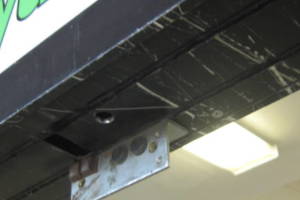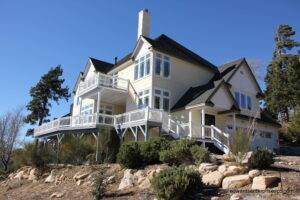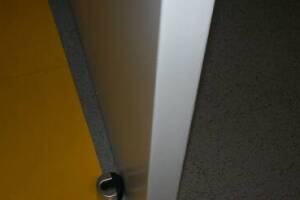Edward's Enterprises handles a variety of Reseda Door installations & repairs such as:
-
Exterior pre-hung doors
-
Interior slab doors
-
Cat doors
-
Doggy doors
-
Door hinges & handles
-
Knobs & latches
-
Cabinet & vanity doors
-
Door adjustments
-
Sagging door repairs
-
Surface mount door closers
-
Overhead concealed door closers
-
Door installations & replacements
Even with the most expensive door installation eventually wood splits, glass shatters or paint wears off from the elements or wear & tear. These problems may leave you looking for repairs or maybe even with a door overhaul project. It may be time for that new door installation you've been thinking about.
Not sure if we can help with your hourly door repair? Call our office to discuss your door installation needs!
- Handy Tips
- Did You Know?
- Other Work
- DIY FAQs
In order to paint Fiberglass doors you should clean the front, back & edges with mild detergent & water or use a TSP (tri-sodium phosphate) solution before painting. Remember also, that, when it comes to resisting weathering most effectively, exterior types of paint can work best. Apply evenly.
After rinsing, allow to completely dry. This should remove any oils from shipping or manufacturing. It's usually an overnight process, so don't try to rush it. Take any tape off the very next morning, apply additional topcoats, or simply finish up the process. Have some water-based latex paint with you, too, in addition to some assorted-size paintbrushes. A paint stirring stick would not be such a bad idea, either. Get mineral spirits or acetone, too, if they can be found.
Do not use lacquer on any type of fiberglass surfaces as it is simply not good for them at all. If the door was stained, or even painted, in any previous point, then stop. Before you start, put a bonding primer on the whole door. Once that primer has dried up properly, then you can begin to paint. This is a very important step, all in all.
Door closers were patented in the United States on the same day American Illustrator & Artist Albert Henry Krehbiel was born (November 25, 1873) by Francis Richards. It used a spring & adjustment screw in a cylinder tube. It was primitive, noisy & inconsistent in action speed, but an improvement over the previous efforts. Once other inventors got in the act things changed quickly.
On June 15, 1880, Lewis C. Norton was issued a patent on an improved pneumatic door closer which added air pressure in the cylinder to prevent the door from slamming. A second patent followed in 1882, a device that had better speed control, improved closing performance, & was more effective. This led to Norton forming the Norton Door Check & Spring Company in June of that year.
The first door closer to use liquid was invented by Eugene Blount in 1889. In 1916 John Gerard of Connecticut invented the first concealed-in-the-door liquid closer. Often doors in commercial locations now have concealed closers in the jamb or floor!
Today more & more doors require, by code, a door closer including fire doors, apartment & hotel doors, ADA doors & doors in air conditioned spaces for heating & cooling efficiency. If your closer is leaking oil, or if the door is closing too slow or slamming, have the closer examined to determine if it can be adjusted, repaired, or needs to be replaced.
You can open your door fully, then let go & count to 5 Mississippi. If it closes too fast, too slow, or doesn't latch, an adjustment may be required for security.
What type of front door is best?
If you want to settle for quality, then you should go for a steel door. These doors provide security & durability of your best interest. You will also require minimal tools to repair any dents & dings that might form unlike what you'd use for cracks & warps in fiberglass & wooden doors.
FAQ Source
Why are front doors so expensive?
The high pricing of front doors is usually a result of considerations such as the material used; customization is done, accent fixtures, installation, warranty, & hardware options.
FAQ Source

 We charge for all time allotted to a customer's assembly or staging services project, including purchasing & delivering materials, or offsite work like painting lumber prior to an installation, or for the time to dispose of debris. This allows us to take on smaller projects for our property owner clients, rather than only lump sum projects with much higher minimums to show up.
We charge for all time allotted to a customer's assembly or staging services project, including purchasing & delivering materials, or offsite work like painting lumber prior to an installation, or for the time to dispose of debris. This allows us to take on smaller projects for our property owner clients, rather than only lump sum projects with much higher minimums to show up.




 Most handyman requests get a 3 hour window of arrival, so plan on something like 8am to 11am, or 9am to 12pm, or even 12pm to 3pm window.
Most handyman requests get a 3 hour window of arrival, so plan on something like 8am to 11am, or 9am to 12pm, or even 12pm to 3pm window.